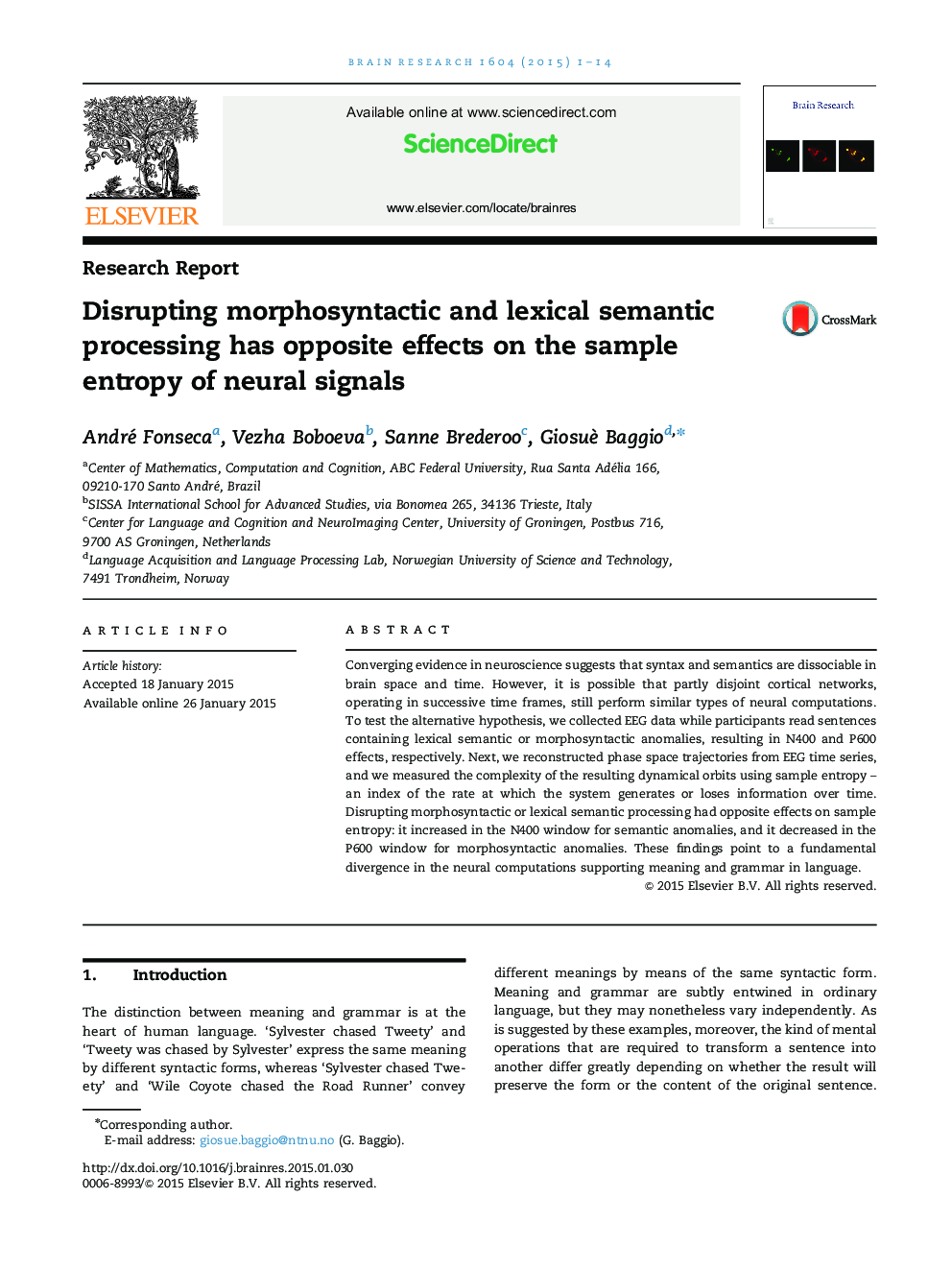| Article ID | Journal | Published Year | Pages | File Type |
|---|---|---|---|---|
| 4323838 | Brain Research | 2015 | 14 Pages |
•Syntax and semantics are dissociable in brain space and time.•Dissociable systems may still perform similar computations.•We used entropy data to dissociate meaning and grammar computationally.•Processing lexical semantic anomalies increased entropy.•Processing morphosyntactic anomalies decreased entropy.
Converging evidence in neuroscience suggests that syntax and semantics are dissociable in brain space and time. However, it is possible that partly disjoint cortical networks, operating in successive time frames, still perform similar types of neural computations. To test the alternative hypothesis, we collected EEG data while participants read sentences containing lexical semantic or morphosyntactic anomalies, resulting in N400 and P600 effects, respectively. Next, we reconstructed phase space trajectories from EEG time series, and we measured the complexity of the resulting dynamical orbits using sample entropy – an index of the rate at which the system generates or loses information over time. Disrupting morphosyntactic or lexical semantic processing had opposite effects on sample entropy: it increased in the N400 window for semantic anomalies, and it decreased in the P600 window for morphosyntactic anomalies. These findings point to a fundamental divergence in the neural computations supporting meaning and grammar in language.
